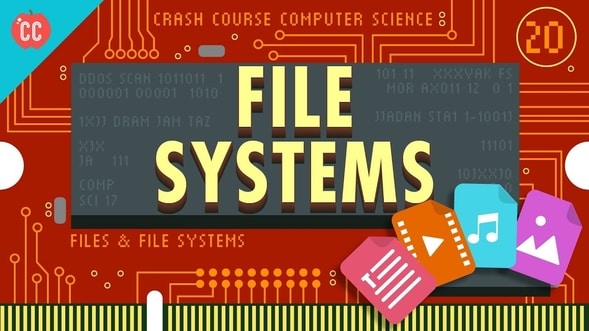Back to: COMPUTER SCIENCE SS2
Welcome to Class !!
We are eager to have you join us !!
In today’s Computer Science class, We will be learning about Computer Files. We hope you enjoy the class!

A computer file is a resource for storing information which is available to a computer program and is usually based on some kind of durable storage. A computer file can be considered as the modern counterpart of paper documents which are traditionally kept in offices and libraries. A file is “durable” in the sense that it remains available for other programs to use after the program that created it has finished executing.
A computer file is a block of arbitrary information, or resource for storing information, which is available to a computer program and is usually based on some kind of durable storage. Computer files can be considered as the modern counterpart of paper documents which traditionally are kept in offices and libraries’ files, and this is the source of the term.
Files are a collection of data in a permanent storage media such as hard drive, CD or DVD ROM, floppy disk, memory card, flash drive etc.
A record is a valve that contains other values typically in fixed numbers and typically indexed by names. The elements of records are usually called fields or members.
A data item is an atomic state of a particular object concerning a specific property at a certain time. A data item is identified by object (O), property (P) is a function of O, P and T. (O, P, T) values are represented by symbols like numbers, text, images, sounds, video and others.
Data item refer to a single unit of value e.g. Roll Number, Name, Date of Birth, Age e.t.c
There are two types of data items
They are
- Group items
- Elementary items
Types of files organization
- Serial
- Sequential
- Indexed
- Random
- Relative
File organization refers to the way records are physically arranged on a storage device. Information in a computer file can consist of smaller packets of information (often called “records” or “lines”) that are individually different but share some trait in common. The way information is grouped into files is entirely up to the person designing the file. Most computer files are used by computer programs. These programs create, modify and delete files for their own use on an as-needed basis.
Method of Accessing files
- Serial access
- Sequential access
- Random access
Types of Computer Files
Using my computer as an example, computer file types can be characterized in a few major groups:
- System File – These usually exist in the “Windows” folder. In most litigation cases, these files are not necessary, but in some cases, they may be critically important. This needs to be documented in the Litigation Response Plan.
- Program Files – These usually exist in the “Program Files” folder (e. g. Microsoft and Adobe products). In most litigation cases, these files are not necessary, but in some cases, they may be critically important. This needs to be documented in the Litigation Response Plan.
- Document Files – For example, Microsoft Word or Excel files. These are often important in litigation.
- Multimedia Files – For example, video, audio, and graphic files. These are often important in intellectual property cases.
- Emails – A common and important data type in litigation.
FUNCTIONS OF FILE
(i) It provides machine-executable code which is used to run application programs and the operating system.
(ii) It stores application programs or operating system configuration information.
(iii) It stores data used by the user such as Ms Word.
File System

BYTE – ORIENTED FILE SYSTEM
In this type of file – system, a file is considered as a sequence of bytes, the operating system supplies routines that can read/write a specific number of bytes. To have any structure in a file, system and application programs accessing the file must adopt some convention that has to be respected by all programs.
RECORD – ORIENTED FILE SYSTEM
Here a file is a sequence of records of the same type. A record is a sequence of data bytes together with control information about the record’s size and some other properties. This structure is imposed by consistently interpreting the data and control information kept in the records, by the system routine you call in order to perform file input or output.
ADVANTAGES OF COMPUTERIZED FILES
(i) Computer can perform calculations quickly and efficiently.
(ii) Data can be retrieved quickly and easily.
(iii) Lost documents can be retrieved.
(iv) Security is tight and hard to break into.
(v) Makes work easier.
(vi) Quicker to find things and sort things.
(vii) Transactions, accounts can be handled more properly by computers than manually.
LIMITATIONS OF COMPUTERIZED FILES
(i) Computerized filing system is expensive to set up.
(ii) Not effective where there is irregular electric supply.
(iii) Skilled labour with proficiency in computers is required.
We have come to the end of this class. We do hope you enjoyed the class?
Should you have any further question, feel free to ask in the comment section below and trust us to respond as soon as possible.
In our next class, we will continue learning about Method of Accessing Files. We are very much eager to meet you there.

Very accurate for reading my
Love this lesson